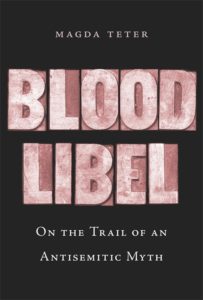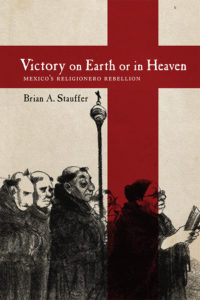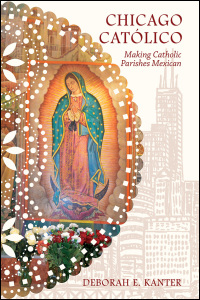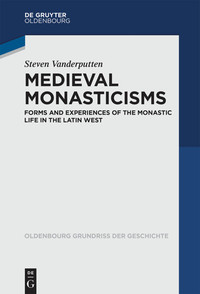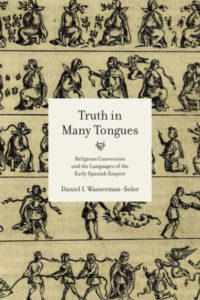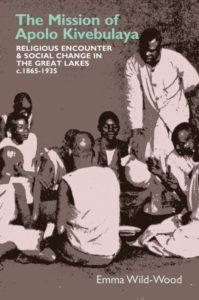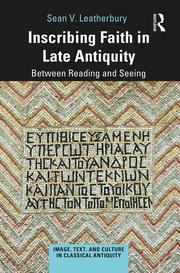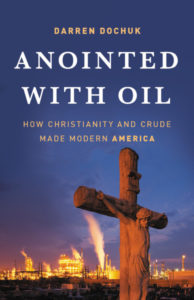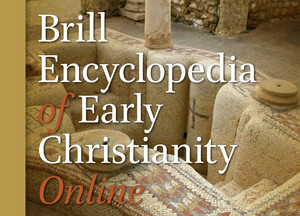Monthly Updates on Recent Books in the History of Christianity
Due to the cancellation of many conferences in the past six months amid the COVID-19 pandemic, many of us have had less opportunity to browse or even see new books coming out in our fields. To raise awareness of recent books in the history of Christianity, the editorial staff of Church History: Studies in Christianity and Culture will be highlighting each month a list of 10-15 books in diverse periods and geographical regions that we hope will be of interest to our members. We include here below the first monthly list, chosen by our staff, with excerpts from the publishers’ blurbs. These books will also be featured on our social media accounts in groups of two or three per week.
John Corrigan, Religious Intolerance, America, and the World. A History of Forgetting and Remembering
University of Chicago Press Page
As the news shows us every day, contemporary American culture and politics are rife with people who demonize their enemies by projecting their own failings and flaws onto them. But this is no recent development. Rather, as John Corrigan argues here, it’s an expression of a trauma endemic to America ’s history, particularly involving our long domestic record of religious conflict and violence.
Religious Intolerance, America, and the World spans from Christian colonists’ intolerance of Native Americans and the role of religion in the new republic’s foreign-policy crises to Cold War witch hunts and the persecution complexes that entangle Christians and Muslims today. Corrigan reveals how US churches and institutions have continuously campaigned against intolerance overseas even as they’ve abetted or performed it at home. This selective condemnation of intolerance, he shows, created a legacy of foreign policy interventions promoting religious freedom and human rights that was not reflected within America’s own borders. This timely, captivating book forces America to confront its claims of exceptionalism based on religious liberty—and perhaps begin to break the grotesque cycle of projection and oppression.
See publisher's website here.

Stefan Bauer. The Invention of Papal History: Onofrio Panvino between Renaissance and Catholic Reform
How was the history of post-classical Rome and of the Church written in the Catholic Reformation? Historical texts composed in Rome at this time have been considered secondary to the city's significance for the history of art. The Invention of Papal History corrects this distorting emphasis and shows how historical writing became part of a comprehensive formation of the image and self-perception of the papacy. By presenting and fully contextualising the path-breaking works of the Augustinian historian Onofrio Panvinio (1530-1568), Stefan Bauer shows what type of historical research was possible in the late Renaissance and the Catholic Reformation. Crucial questions were, for example: How were the pontiffs elected? How many popes had been puppets of emperors? Could any of the past machinations, schisms, and disorder in the history of the Church be admitted to the reading public? Historiography in this period by no means consisted entirely of commissioned works written for patrons; rather, a creative interplay existed between, on the one hand, the endeavours of authors to explore the past and, on the other hand, the constraints of ideology and censorship placed on them. The Invention of Papal History sheds new light on the changing priorities, mentalities, and cultural standards that flourished in the transition from the Renaissance to the Catholic Reformation.
See publisher's website here.
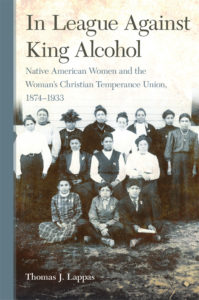
Thomas J. Lappas. In League Against King Alcohol: Native American Women and the Woman's Christian Temperance Union, 1874-1933
University of Oklahoma Press Page
Many Americans are familiar with the real, but repeatedly stereotyped problem of alcohol abuse in Indian country. Most know about the Prohibition Era and reformers who promoted passage of the Eighteenth Amendment, among them the members of the Woman’s Christian Temperance Union. But few people are aware of how American Indian women joined forces with the WCTU to press for positive change in their communities.
Drawing on the WCTU’s national records as well as state and regional organizational newspaper accounts and official state histories, historian Thomas John Lappas unearths the story of the Woman’s Christian Temperance Union in Indian country. His work reveals how Native American women in the organization embraced a type of social, economic, and political progress that their white counterparts supported and recognized—while maintaining distinctly Native elements of sovereignty, self-determination, and cultural preservation. They asserted their identities as Indigenous women, albeit as Christian and progressive Indigenous women. At the same time, through their mutual participation, white WCTU members formed conceptions about Native people that they subsequently brought to bear on state and local Indian policy pertaining to alcohol, but also on education, citizenship, voting rights, and land use and ownership. Lappas’s work places Native women at the center of the temperance story. Subtly but significantly, they altered the welfare and status of American Indian communities in the early twentieth century.
See publisher's website here.
Magda Teter. Blood Libel: On the Trail of an Anti-Semitic Myth
Accusations that Jews ritually killed Christian children emerged in the mid-twelfth century, following the death of twelve-year-old William of Norwich, England, in 1144. Later, continental Europeans added a destructive twist: Jews murdered Christian children to use their blood. While charges that Jews poisoned wells and desecrated the communion host waned over the years, the blood libel survived.
Initially blood libel stories were confined to monastic chronicles and local lore. But the development of the printing press in the mid-fifteenth century expanded the audience and crystallized the vocabulary, images, and “facts” of the blood libel, providing a lasting template for hate. Tales of Jews killing Christians―notably Simon of Trent, a toddler whose body was found under a Jewish house in 1475―were widely disseminated using the new technology. Following the paper trail across Europe, from England to Italy to Poland, Magda Teter shows how the blood libel was internalized and how Jews and Christians dealt with the repercussions.
The pattern established in early modern Europe still plays out today. In 2014 the Anti-Defamation League appealed to Facebook to take down a page titled “Jewish Ritual Murder.” The following year white supremacists gathered in England to honor Little Hugh of Lincoln as a sacrificial victim of the Jews. Based on sources in eight countries and ten languages, Blood Libel captures the long shadow of a pernicious myth.
See publisher's website here.
Brian A. Stauffer. Victory on Earth or In Heaven: Mexico's Religionero War. 2019
University of New Mexico Press
This work reconstructs the history of Mexico’s forgotten “Religionero” rebellion of 1873–1877, an armed Catholic challenge to the government of Sebastián Lerdo de Tejada. An essentially grassroots movement—organized by indigenous, Afro-Mexican, and mestizo parishioners in Mexico’s central-western Catholic heartland—the Religionero rebellion erupted in response to a series of anticlerical measures raised to constitutional status by the Lerdo government. These “Laws of Reform” decreed the full independence of Church and state, secularized marriage and burial practices, prohibited acts of public worship, and severely curtailed the Church’s ability to own and administer property. A comprehensive reconstruction of the revolt and a critical reappraisal of its significance, this book places ordinary Catholics at the center of the story of Mexico’s fragmented nineteenth-century secularization and Catholic revival.
See publisher's website here.
Tarmo Toom, Ed. The Cambridge Companion to Augustine’s “Confessions.” 2020
This Cambridge Companion serves as an authoritative guide to Augustine's Confessions - a literary classic and one of the most important theological/philosophical works of Late Antiquity. Bringing together new essays by leading scholars, the volume first examines the composition of the text, including its structure, genre, and intended audience. Subsequent essays explore a range of themes and concepts, such as God, creation, sin, grace, happiness, and interiority, among others. The final section of the Companion deals with its historical relevance. It provides sample essays on the reception history of the Confessions. These essays demonstrate how each generation reads the Confessions in light of current questions and circumstances, and how the text continues to remain relevant and raise new questions.
See publisher's website here.
Deborah E. Kanter. Chicago Católica: Making Catholic Parishes Mexican. 2020.
Today, over one hundred Chicago-area Catholic churches offer Spanish-language mass to congregants. How did the city's Mexican population, contained in just two parishes prior to 1960, come to reshape dozens of parishes and neighborhoods?
Deborah E. Kanter tells the story of neighborhood change and rebirth in Chicago's Mexican American communities. She unveils a vibrant history of Mexican American and Mexican immigrant relations as remembered by laity and clergy, schoolchildren and their female religious teachers, parish athletes and coaches, European American neighbors, and the immigrant women who organized as guadalupanas and their husbands who took part in the Holy Name Society. Kanter shows how the newly arrived mixed memories of home into learning the ways of Chicago to create new identities. In an ever-evolving city, Mexican immigrants and Mexican Americans’ fierce devotion to their churches transformed neighborhoods such as Pilsen.
The first-ever study of Mexican-descent Catholicism in the city, Chicago Católico illuminates a previously unexplored facet of the urban past and provides present-day lessons for American communities undergoing ethnic integration and succession.
See publisher's website here.
Katherine Allen Smith. The Bible and Crusade Narrative in the Twelfth Century. 2020
The Bible exerted an enormous influence on the crusading movement: it provided medieval Christians with language to describe holy war, spiritual models for crusaders, and justifications for conquests in the East. This book offers a reappraisal of the early twelfth-century narratives of the First Crusade as works of biblical exegesis rather than simply historical texts. It restores these works and their authors to the context of the monastic and cathedral schools where the curricula centered on biblical study, and demonstrates how the crusade's narrators applied familiar methods of scriptural commentary to the crusade, treating it as a text which could, like the Bible, be understood through historical, allegorical, and mystical lenses.
These glosses of the First Crusade, which collectively constitute one of the great intellectual achievements of their age, drew upon the Scriptures and earlier Christian theology, pilgrimage guides, and polemic to construct the crusade as a new chapter of sacred history. The first crusaders played various biblically inspired roles: as new Israelites, they wrested the promised land from Muslims cast as new Canaanites and Babylonians; as new apostles, they reenacted some of the greatest miracles of the Gospels. By reconstructing the interpretive processes that made such readings possible, this study allows us to better appreciate the crusading movement's relationship to church reform, the apostolic revival, and the growth of anti-Jewish sentiment in twelfth-century Europe.
See publisher's website here.
Steven Vanderputten. Medieval Monasticisms: Forms and Experiences of the Monastic Life in the Latin West. 2020
From the deserts of Egypt to the emergence of the great monastic orders, the story of late antique and medieval monasticism in the West used to be straightforward. But today we see the story as far 'messier' - less linear, less unified, and more historicized. In the first part of this book, the reader is introduced to the astonishing variety of forms and experiences of the monastic life, their continuous transformation, and their embedding in physical, socio-economic, and even personal settings. The second part surveys and discusses the extensive international scholarship on which the first part is built. The third part, a research tool, rounds off the volume with a carefully representative bibliography of literature and primary sources.
See publisher's website here.
Daniel I. Wasserman-Soler. Truth in Many Tongues: Religious Conversion and the Languages of the Early Spanish Empire. 2020
Truth in Many Tongues examines how the Spanish monarchy managed an empire of unprecedented linguistic diversity. Considering policies and strategies exerted within the Iberian Peninsula and the New World during the sixteenth century, this book challenges the assumption that the pervasiveness of the Spanish language resulted from deliberate linguistic colonization.
Drawing from inquisition reports and letters; royal and ecclesiastical correspondence; records of church assemblies, councils, and synods; and printed books in a variety of genres and languages, Daniel I. Wasserman-Soler shows that Church and Crown officials had no single, unified policy either for Castilian or for other languages. They restricted Arabic in some contexts but not in others. They advocated using Amerindian languages, though not in all cases. And they thought about language in ways that modern categories cannot explain: they were neither liberal nor conservative, neither tolerant nor intolerant. In fact, Wasserman-Soler argues, they did not think predominantly in terms of accommodation or assimilation, categories that are common in contemporary scholarship on religious missions. Rather, their actions reveal a highly practical mentality, as they considered each context carefully before deciding what would bring more souls into the Catholic Church. Truth in Many Tongues will fascinate students and scholars who specialize in early modern Spain, colonial Latin America, Christian-Muslim relations, and early modern Catholicism.
See publisher's website here.
Emma Wild-Wood. The Mission of Apolo Kivebulaya: Religious Encounter and Social Change in the Great Lakes c.1865-1935. 2020
Apolo Kivebulaya was a practitioner of indigenous religion and a Muslim before he became in 1895 a Christian missionary from Buganda to Toro and Ituri. He is still admired as a churchman and missionary in the Anglican churches of Uganda, Congo, Tanzania and Kenya, and is a significant civic figure in school curricula in Uganda. This book provides insight into religious encounter in the Great Lakes region of Africa, in which individuals like Kivebulaya remade themselves through conversion to Christianity and re-ordered social relations through preaching a transnational religion which brought technological advantage.
In re-examining Apolo's life, Wild-Wood reveals the historic social processes and cultural motivations which provoked religious and socio-political change in colonial east Africa. She explores the processes of his religious adherence, his travels and church planting, his commitment to Bible translation and its role in developing national sensibilities, and his engagement with missionaries, the Ganda political elite, and the peoples of the Ituri forest, as well as British and Belgian colonial polities. Kivebulaya utilized Christian repertoires of memory-making - the Bible, hymns, prayers and fellowship - in creating communities of disciples, and was instrumental in creating new forms of Christian identity in the region, fashioned by levels of acceptance and resistance. By focusing on indigenous agents as harbingers of change, the author offers a new perspective on the history of this region.
See publisher's website here.
Sean Leatherbury. Inscribing Faith in Late Antiquity: Between Seeing and Reading. 2019
Inscribing Faith in Late Antiquity considers the Greek and Latin texts inscribed in churches and chapels in the late antique Mediterranean (c. 300–800 CE), compares them to similar texts from pagan, Jewish, and Muslim spaces of worship, and explores how they functioned both textually and visually.
These texts not only recorded the names and prayers of the faithful, but were powerful verbal and visual statements of cultural values and religious beliefs, conveying meaning through their words as well as through their appearances. In fact, the two were intimately connected. All of these texts – Christian, Jewish, Muslim, and pagan – acted visually, embracing their own materiality as mosaic, paint, or carved stone. Colourful and artfully arranged, the inscriptions framed human relationships with the divine, encouraged responses from readers, and made prayers material. In the first in-depth examination of the inscriptions as words and as images, the author reimagines the range of aesthetic, cultural, and religious experiences that were possible in spaces of worship.
Inscribing Faith in Late Antiquity is essential reading for those interested in Roman, late antique, and Byzantine material and visual culture, inscriptions and other texts, and religious life in the ancient Mediterranean.
See publisher's website here.
Darren Dochuk. Anointed with Oil: How Christianity and Crude Made Modern America. 2019.
Anointed with Oil places religion and oil at the center of American history. As prize-winning historian Darren Dochuk reveals, from the earliest discovery of oil in America during the Civil War, citizens saw oil as the nation’s special blessing and its peculiar burden, the source of its prophetic mission in the world. Over the century that followed and down to the present day, the oil industry’s leaders and its ordinary workers together fundamentally transformed American religion, business, and politics — boosting America’s ascent as the preeminent global power, giving shape to modern evangelical Christianity, fueling the rise of the Republican Right, and setting the terms for today’s political and environmental debates.
Ranging from the Civil War to the present, from West Texas to Saudi Arabia to the Alberta Tar Sands, and from oil-patch boomtowns to the White House, this is a sweeping, magisterial book that transforms how we understand our nation’s history.
See publisher's website here.
Brill Encyclopedia of Early Christianity Online. Ongoing
The Brill Encyclopedia of Early Christianity (BEEC) focuses on the history of early Christianity, covering texts, authors, and ideas. The BEEC aims both to provide a critical review of the methods used in Early Christian Studies and also to update the history of scholarship. The BEEC addresses a range of traditions, including iconographic, martyrological, ecclesiastical, and Christological traditions, as well as cultic phenomena, such as the veneration of saints. The history of the transmission of texts and the attention to recent scholarship will play an important role. The BEEC focuses on early Christianity from a historical perspective in order to uncover the lasting legacy of the authors and texts until the present day. Its content is intended to bridge the gap between the fields of New Testament studies and patristics, covering the whole period of early Christianity up to 600 CE. Currently 620 articles are available. The encyclopedia will consist of about 1300 articles. Every year about 300 articles will be added until planned completion in 2022. Once the online version is completed the encyclopedia will become available in print in 6 volumes.
See publisher's website here.
Finally, for staying up-to-date on the latest titles in all fields, we recommend regularly perusing New Books Network, and will regularly link to its “New Books in Christian Studies” page here. These pages are updated regularly.


